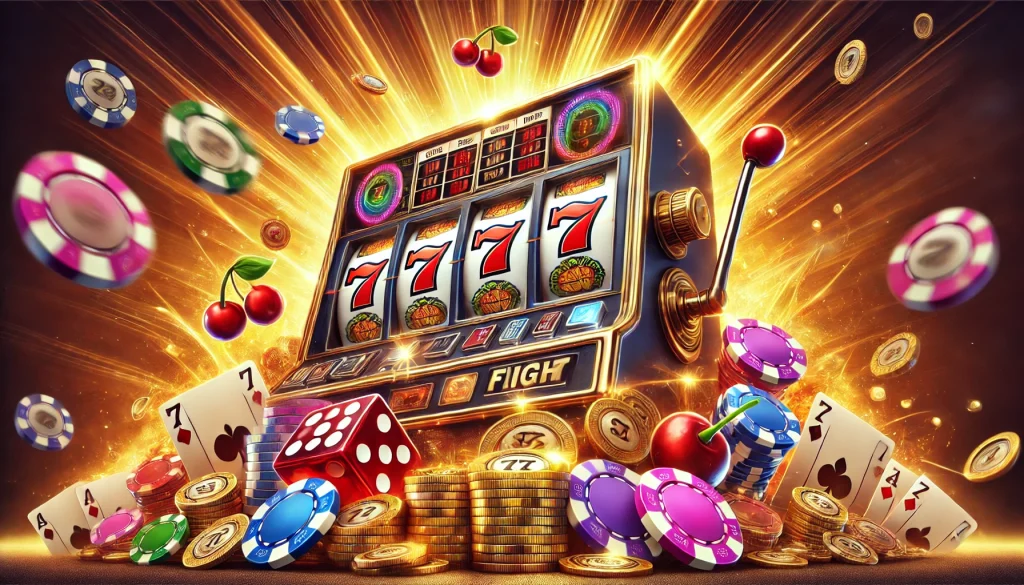In the world of casino gaming, few terms are mentioned as often yet understood as little as RTP. Short for Return to Player, RTP has become one of the most important elements in determining how a game behaves, how much of players’ money is theoretically paid back over time, and how casinos structure their profit margins. Despite its importance, many players either ignore it or misunderstand its true purpose. They may see a percentage and assume that they are guaranteed to receive that amount back during gameplay, when in reality, RTP is a long-term statistical calculation rather than a short-term promise.
The Origins of RTP in Early Gaming
Before the concept of RTP was formalized, mechanical gambling machines operated based on fixed physical configurations. Their payouts were determined by the arrangement of symbols on the reels, and although these early devices had predictable long-term behaviors, there was no standardized way to measure how much money a player could expect to win back. As gambling became more regulated, authorities began demanding transparency. It was no longer acceptable for machines to operate without some kind of mathematical accountability. This led to the development of theoretical payout percentages, which evolved into what is now known as RTP. Over time, RTP became a central figure in discussions of fairness, shaping the structure of modern regulation.
Understanding What RTP Really Means
At its core, RTP represents the percentage of all money wagered on a game that is returned to players over a large number of spins. For example, a machine with a 96% RTP means that, in the long run, it will theoretically pay back 96% of all money wagered, keeping 4% as profit for the house. However, the key phrase is in the long run. RTP is not designed to predict short-term sessions. It is calculated over millions of spins, which means a player could experience a big win or a devastating loss within a small number of slot spins, even if the RTP is high. Misunderstanding this concept leads many players to believe that a game owes them money, when in reality, each spin is independent and unaffected by previous results.
Why RTP Became the Standard of Fairness
As the gambling industry expanded, casinos faced pressure to prove that their games were not rigged. RTP emerged as a way to ensure fairness without removing the house edge. It created a balance casinos could still profit, but players could trust that the game was not entirely one-sided. Regulatory bodies began requiring developers to publish RTP percentages and submit their games for independent testing. This transparency not only built trust but also sparked competition among developers to offer games with attractive payout rates. The result was a more informed and empowered player base, one that could compare games based on mathematical fairness rather than just visual appeal.
The Relationship Between RTP and House Edge
RTP and house edge are two sides of the same coin. If a game has a 96% RTP, it has a 4% house edge. This edge ensures that the casino will profit over time, but it also means that players can still win in the short term. The game is not designed to prevent winning, it is designed to guarantee profitability for the casino over thousands or millions of plays. Understanding the house edge is crucial because it dispels the myth that casinos rely on luck or manipulation. Instead, they rely on carefully calculated probabilities embedded in each game. The RTP simply reveals how generous the game is over an extended period.
How Players Misinterpret RTP During Gameplay
One of the biggest misconceptions about RTP is the belief that it will even out during a single gaming session. Players often assume that if they keep playing long enough, the game will eventually return the percentage promised by the RTP. This is a dangerous mindset. RTP does not work within a short session applies to massive volumes of spins across all players. A player might hit a large win on their first spin or lose continuously despite the high theoretical payout. Each outcome is random, and the game never adjusts based on a player’s history. Understanding this stops players from chasing losses or believing a win is due.
RTP Alone Does Not Tell the Full Story
While RTP is a critical factor, it does not fully determine how a game feels. Two games with the same RTP can behave very differently due to volatility. A high-volatility game may offer rare but large wins, while a low-volatility game may deliver frequent but small payouts. Both could have a 96% RTP, yet one might feel generous and thrilling while the other feels steady and predictable. This is why relying solely on RTP can be misleading. It tells you the long-term average, but not the experience. To choose the right game, players must understand both RTP and volatility, recognizing that one controls the math and the other controls the rhythm.
RTP in Land-Based vs Online Gaming
Land-based casinos often offer lower RTP percentages because they have higher operating costs. Machines on a casino floor might have RTP rates in the range of 85% to 92%, allowing casinos to recover expenses related to staff, maintenance, and property. Online platforms, with lower overhead, typically offer RTP values of 95% or higher. This difference makes online gaming more mathematically favorable for players. However, the atmosphere of land-based gaming can still attract those who value social interaction and the immersive environment. Knowing the difference in RTP between formats helps players make informed choices about where to play and how to manage their bankroll.
The Future of RTP Transparency and Player Awareness
As players become more educated, the industry is trending toward greater transparency. Many modern platforms display RTP information directly in the game menu, and some even allow users to filter games by payout percentage. Developers and regulators are also exploring dynamic RTP systems, where players can choose game modes with different payout rates depending on bet size or feature selection. These innovations reflect a growing movement toward responsible and informed gaming. In the future, understanding RTP may become as common as comparing prices in a store. Players who master this knowledge will have a significant advantage over those who rely on guesswork.
In Summary
RTP is far more than a simple percentage is the mathematical backbone of fairness in modern gaming. It explains how much money is returned to players over the long term, defines the casino’s profit margin, and helps players evaluate the true value of a game. However, RTP does not guarantee short-term results, nor does it eliminate risk. To play intelligently, one must understand how RTP interacts with volatility, psychology, and bankroll management. In the end, RTP provides the insight needed to choose wisely and approach each session with realistic expectations. Those who understand it gain a powerful tool, one that transforms chance into strategy and turns random gameplay into informed decision-making.


